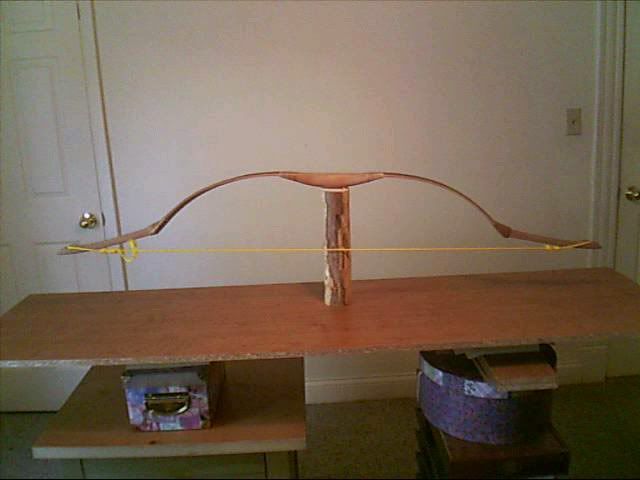i think his point is is that if you make it TOO thin you wind up with not enough wood taking compression where as a bow that has more wood in thickness would be able to take the compression better. theres a balance i think and if its say 1/4 inch or even 3/16in then its got too little wood, idk if im right or wrong but thats my thoughts.
I understand what he is saying, I just don't agreed with it. I have made bows under 1/4" thick before. You know those 1/4" red oak pieces that are 4' long and 4" wide? I play with those all the time. This bow is less than 1/4" thick, with a 7" brace height and a 30" draw:



It may have about 1 1/2" set, but considering that it has less than 30" working limb for a 30" draw, I would not say that is that bad. The bow has one thin layer of sinew with tb3, which did not add any reflex to the bow at all. Previously, when I had tried the same exact design, but a little narrower, and a little thicker, all I ended up with was chrysals, set, and wasted sinew galore. This bow was like 4" wide at the fades, and 1 1/2" where the levers attached. So there is an example right there proving you wrong. I have made better examples without sinew but I don't have pictures nor do I have the bows anymore.
I really didn't intend to get into an in depth discussion,
my specific point is that adding 1/2" to the fades of a 1 1/2" wide osage bow would never in a million years cause set. That is just crazy talk to me. Osage is great in compression and all adding 1/2" to the fades would do is distribute the compression a bit more in the limb section right off the fades. Which obviously, osage doesn't even need it, so this argument is just pointless. Either way, I've said my peace, I'm done. I'm sorry for going off topic in your thread sleek, I look forward to seeing that beautiful fulldraw.